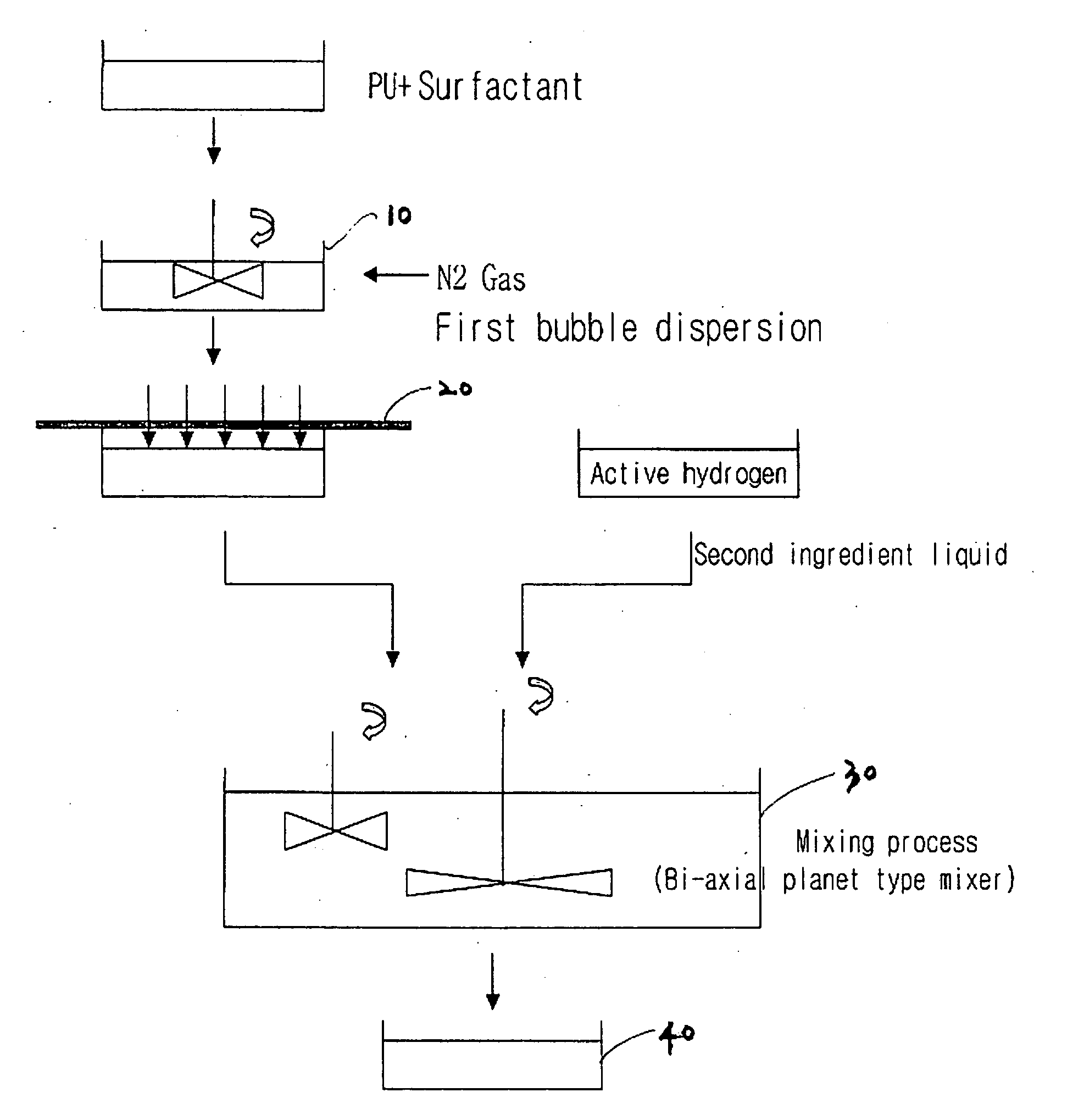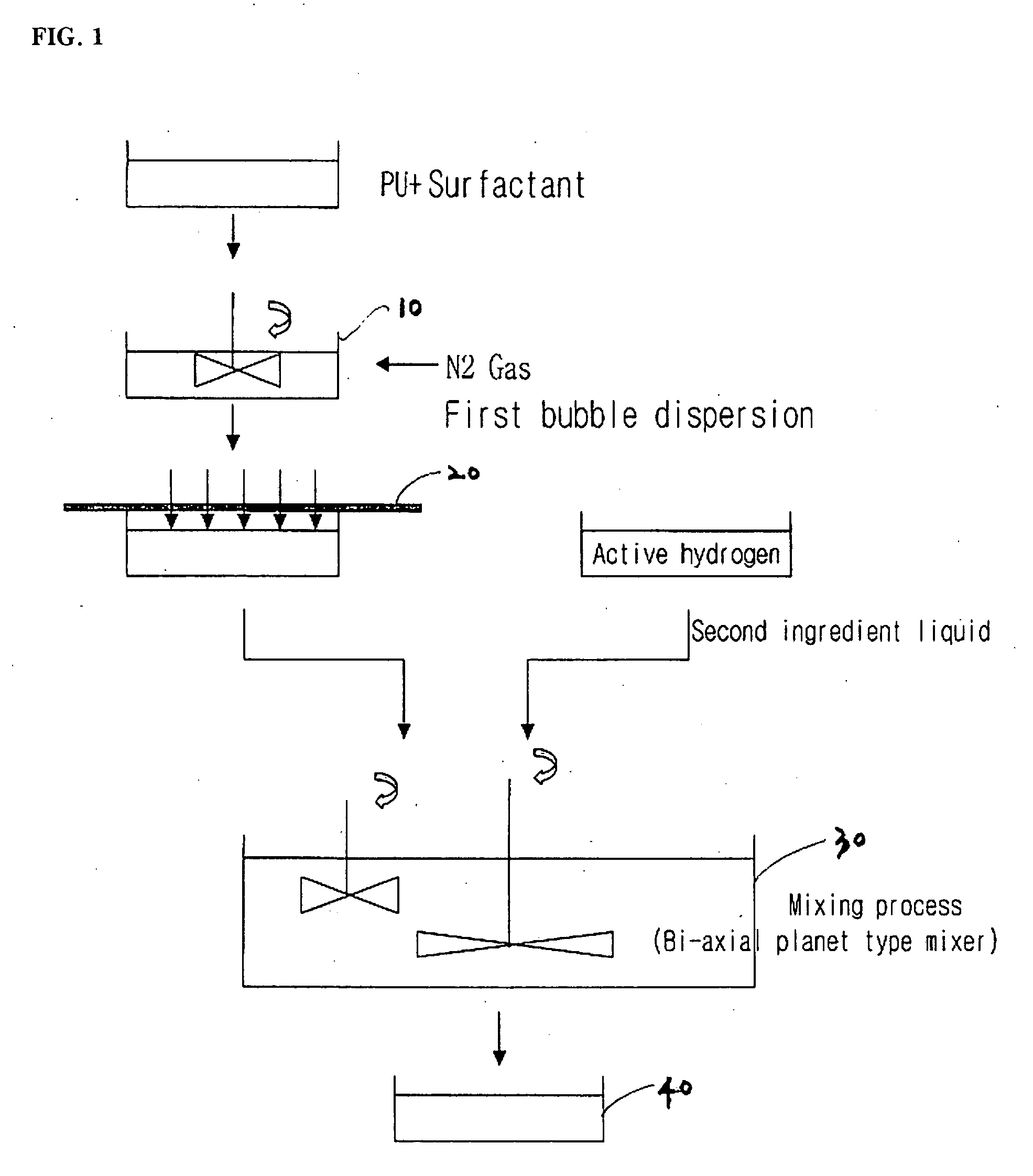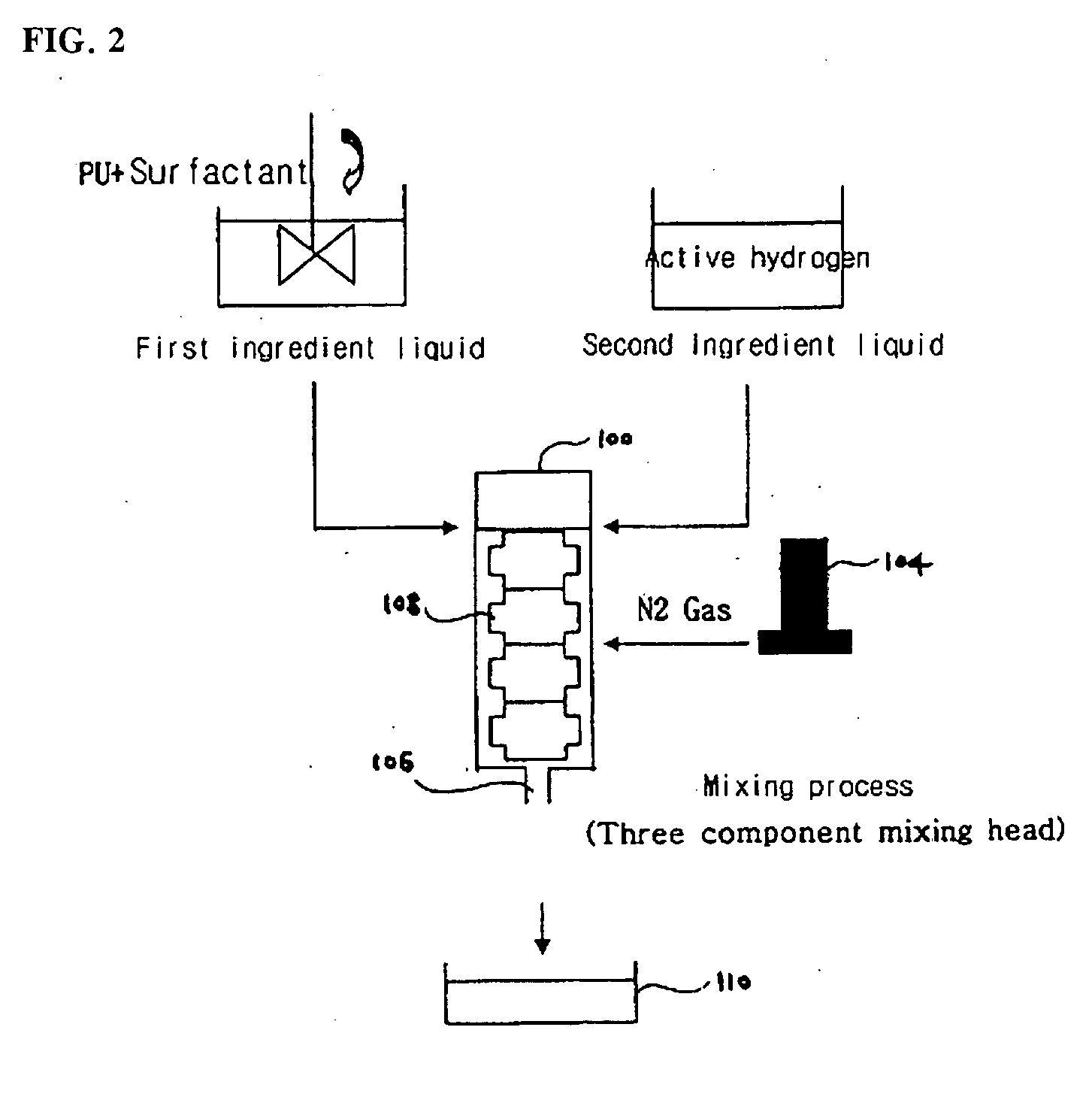Method of fabricating polyurethane foam with micro pores and polishing pad therefrom
a polyurethane foam and micropore technology, applied in the direction of manufacturing tools, flexible wheels, lapping tools, etc., can solve the problems of increasing the number of layers formed on the wafer, the insufficient improvement of exposure technology alone, and the increase of the surface area of the wafer, so as to increase the process margin, simplify the fabrication process, and the effect of flexible material selection
- Summary
- Abstract
- Description
- Claims
- Application Information
AI Technical Summary
Benefits of technology
Problems solved by technology
Method used
Image
Examples
embodiment 1
[0070] As shown in the schematic view of FIG. 2, 1 part by weight of silicone-based surfactant containing a hydroxyl group (brand name: DC-193, DOW CORNING Co., Ltd.) is mixed with 100 parts by weight of isocyanate terminated urethane prepolymer Adiprene L-325, and then, is reacted with each other at a temperature of 60□ for 2 hours. As a result, the hydroxyl group of the silicone-based surfactant becomes extinct and uniform and stabilized urethane prepolymer reaction liquid (a first ingredient liquid) is obtained. The first ingredient liquid is transferred to an air nucleation type molding machine 100, and then, non-reactive gas N2 is injected into it using a mass flowmeter 104 while injecting 24 parts by weight of MBCA (with respect to 100 parts by weight of isocyanate terminated urethane prepolymer Adiprene L-325) dissolved at a temperature of 120□ therein as a second ingredient liquid. Subsequently, the mixture is mixed and agitated by revolving paddles 108 and discharged throug...
embodiments 2 to 9
[0073] A polishing pad is fabricated by the same method as the comparative example 1, by changing the content of the surfactant, the amount of the discharged mixture, and the amount of the injected non-reactive gas, etc. with the composition ratios as shown in following Table 1, and the polishing characteristics of the polishing pad are evaluated. The results of the evaluation are shown in Table 2. As a result of examining the polishing pad produced by the embodiment 2 by using a SEM, the pores formed thereon are found to be very uniform and fine.
[0074] (see FIG. 4)
TABLE 1Composition amounts and process conditions for fabricating a polishing padControl levelActiveof massUrethaneHollowhydrogenflowmeterDischargeprepolymersphereSurfactantcompoundof mixtureAgitating(parts by(parts by(parts by(parts bynon-reactivesolutionspeedweight)weight)weight)weight)gas> (l / min)(kg / min)(rpm)ComparativeL-325 100Expancel—MOCA 25———example 12.3ComparativeL-325 100—DC-190, 1.0MBCA 26.2——3,500example 2...
PUM
| Property | Measurement | Unit |
|---|---|---|
| pressure | aaaaa | aaaaa |
| pressure | aaaaa | aaaaa |
| density | aaaaa | aaaaa |
Abstract
Description
Claims
Application Information
 Login to View More
Login to View More - R&D
- Intellectual Property
- Life Sciences
- Materials
- Tech Scout
- Unparalleled Data Quality
- Higher Quality Content
- 60% Fewer Hallucinations
Browse by: Latest US Patents, China's latest patents, Technical Efficacy Thesaurus, Application Domain, Technology Topic, Popular Technical Reports.
© 2025 PatSnap. All rights reserved.Legal|Privacy policy|Modern Slavery Act Transparency Statement|Sitemap|About US| Contact US: help@patsnap.com



